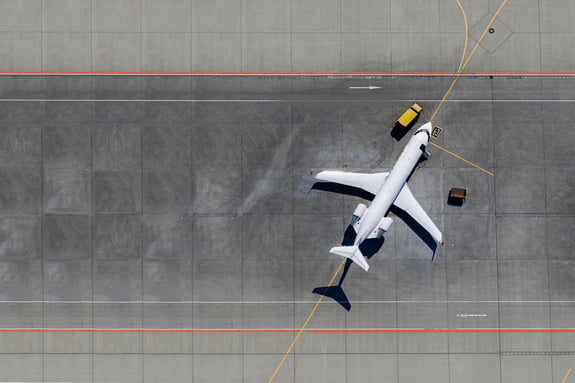After three tumultuous years, things are finally starting to look up for the global airline industry in 2023 — provided they have the right hiring strategies and recruitment solutions in place to support expected traveler demand.
The International Air Transport Association (IATA) has good news for many airlines across the world: after three years plagued with pandemic-related financial losses, rampant inflation, and skyrocketing costs of fuel, the IATA is predicting that the vertical will finally return to profitability in 2023.
IATA Report Predicts Airline Sector Will Hit 4.6 Billion in 2023
A recent IATA report released in December revealed that the global airline sector endured historic financial losses due to COVID-19 quarantines and travel restrictions — a loss of 140 billion USD in 2020 alone. However, changes in the pandemic’s threat, coupled with more relaxed travel restrictions, have prompted an influx in travelers over the last several quarters. As a result, the IATA now expects the to return to pre-pandemic levels and profitability this year, marking the speediest recovery ever in the industry’s history when compared to the depth of the downturn.
The report goes on to predict the industry will “show a profit of USD 4.6 billion on revenues of 779 billion in 2023 – representing an EBIT or operating margin of just 0.4% and a per passenger profit of just USD 1.1.
Factors That Could Impact 2023 Profits For Both Global and Regional Airlines
Of course, like many industries, several risk factors could impact the overall profitability throughout the year. The current high and consistently rising costs of energy, sluggish economic growth across other verticals, exorbitant inflation, and the ongoing war in Ukraine could all impede airline profitability. Additionally, China’s restrictive COVID policies could also come into play, bringing uncertainty not only to the airline industry predictions but also to the global economy in general.
Unexpected Airline Delays and Canceled Flights Can Also Impact Airline Profits
Additionally, unforeseen events like the recent computer outage at the Federal Aviation Administration (FAA) can also take its toll on profits. The unexpected instantly outage brought airports and airlines to a standstill, causing the U.S. transportation department to scramble to identify the root cause as well as fix the situation. As a result, the event caused thousands of delays and the cancellation of flights, all of which can ultimately impede revenues.
Airline Staffing Shortages Can Also Impact The Airline Industry Economy
The current airline labor shortage can also have a direct and potentially significant impact on number of available flights and final profitability numbers in the industry for many major carriers. Labor statistics show that airline carriers have experienced employee loss stemming from both the pandemic downturn and The Great Resignation — and many are still struggling to find the staff needed to manage the almost instantaneous spike in traveler demand. In many cases, the industry has snapped back so quickly many carriers in the aviation industry simply don’t have enough pilots, flight attendants, engineers, and even airport customer services professionals.
Put simply: 2+ years of pent-up demand has unleashed the floodgates, and amid extensive labor shortages, many airline carriers currently feel like they are drowning. A recent article in Fortune magazine noted that “Airlines have been hit by a shortage of pilots and other staff members as well as having to deal with outdated technology. It’s all creating new wrinkles in airline operations that will be felt by millions of passengers.”
Felt by millions of passengers…and also felt by airline executives, pilots, flight attendants, and aviation workers trying to steady their organizations amid seismic staffing gaps for employees. In the same Fortunate article, United Airlines CEO Scott Kirby “pointed out that during the COVID-19 pandemic, the airline industry did not invest in the future to help it better handle any recovery in its business.”
Kirby was also quoted as saying, “That means the system simply can’t handle the volume today, much less the anticipated growth. Like it or not, that’s just the new reality and the new math for all airlines.” To help stave off the shortfall, United and a slew of other airlines hope to make 8,000 hires in pilots alone just in 2023.
Does Your Airline Have An Effective Recruitment Solution?
With so much at stake in 2023, airline carriers are outsourcing their hiring strategies and recruitment solutions to professional enterprise staffing firms. That’s where HOP steps in; our team of recruiting professionals help airlines staff at scale to support current needs and invest in future growth. Schedule your free call today to learn more about using HOP to manage staff shortages for employees across your organization.



COMMENTS